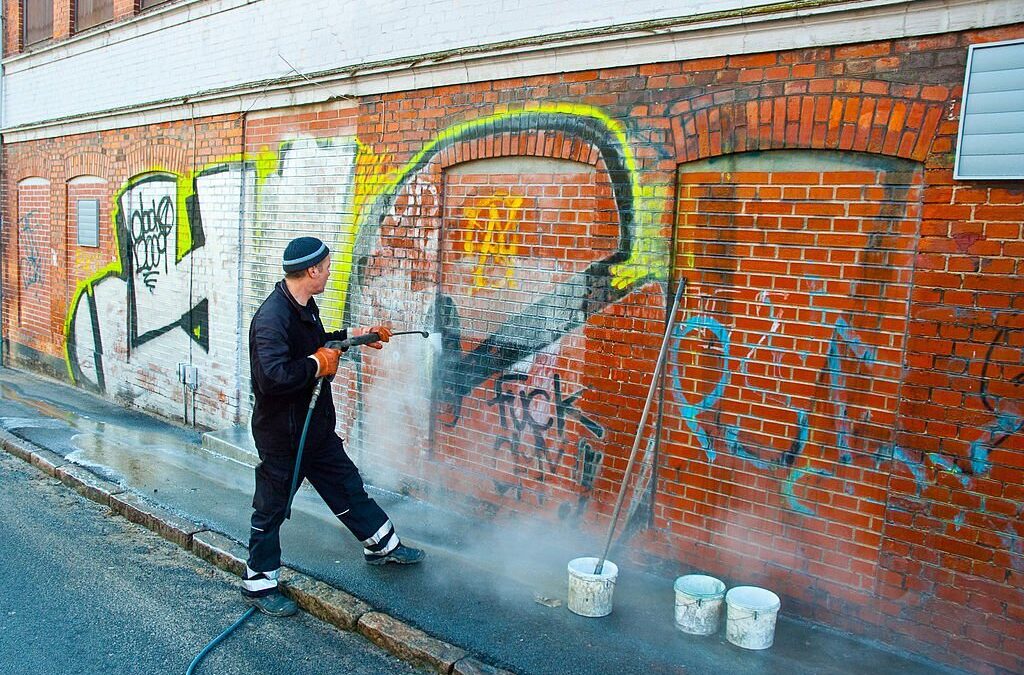There are a few different ways to remove graffiti. There are spray paints, brush-applied paints, and permanent felt markers. These methods can be tricky because “artists” rarely tell you what type of paint they used, so you have to experiment before you try them out on a large area. But if you do it right, you can remove the graffiti quickly and easily. And the best part is that most graffiti “artists” will never tell you what type of paint they used.
Spray paint
Typically, graffiti is created with a variety of different materials. Among these are paint, marker, and water-soluble felt markers. Other types of graffiti can be made using various materials, including chalk, charcoal, and food. Water-soluble materials are easy to remove. In contrast, solvent-based materials can be challenging to remove, so the process begins by identifying the type of paint. If you are unsure what, material graffiti is made of. You can test different cleaning agents on a small area and follow a few simple steps.
Oil-based paint is the most common type of paint used for graffiti removal. This type of paint is more durable than latex, but it also takes longer to dry. Oil-based paints can be applied in colder temperatures but are not recommended for outdoor use. Light rain could cause a graffiti removal job to fail. Oil-based paints can be sealed with a protectant to prevent future graffiti damage. Unlike latex, oil-based paints do not have the same chemical composition as latex paints, making them an ideal choice for exterior projects.
Brush-applied paints
Two primary ways to remove graffiti are cleaning and painting over it. The first is the most cost-effective and is ideal for light graffiti removal. The downside to this method is the patchwork effect it creates. Also, multiple coats of paint will peel off over time, requiring additional work and expense. Moreover, protecting the newly painted surface with a protective jacket is a good insurance policy, especially when dealing with graffiti.
The most common graffiti removal method is painting over the paint that was vandalized. The most popular way is brush-applied paints. These paints are composed of two components: a pigment, or dye, and a binder. The binder holds the pigment together, which is usually a polymer. The solvent in the paint allows the pigment and binder to flow. When applied, the color is still wet and solidifies when the solvent dries. A higher solvent content means better flow and penetration.
Permanent felt markers
These three methods are not as effective, but they all have benefits. Permanent felt tip markers are the most suitable for large tags and thick lines. They are generally graffiti paint pens. Mop markers are also ideal for large dripping tags. Because of their squeezable handles, you can release drips several times until the desired effect is achieved. If you want a perfect gift for an art lover, consider purchasing a Molotov set of 11 acrylic markers.
Once you have identified the type of graffiti, you can choose the most appropriate cleaning agent. Some cleaning agents can emulsify graffiti or drive it deeper to the surface. You can select the correct cleaning agents for different kinds of graffiti by first determining the type of material. Paint, marker, and chalk are three of the most common graffiti removal materials. Chalk, charcoal, pastels, and crayons are also common graffiti mediums. Some graffiti removers may also work on water-soluble graffiti. You may have to use mineral spirits or a paint stripper if the paint is made from a solvent.


Recent Comments